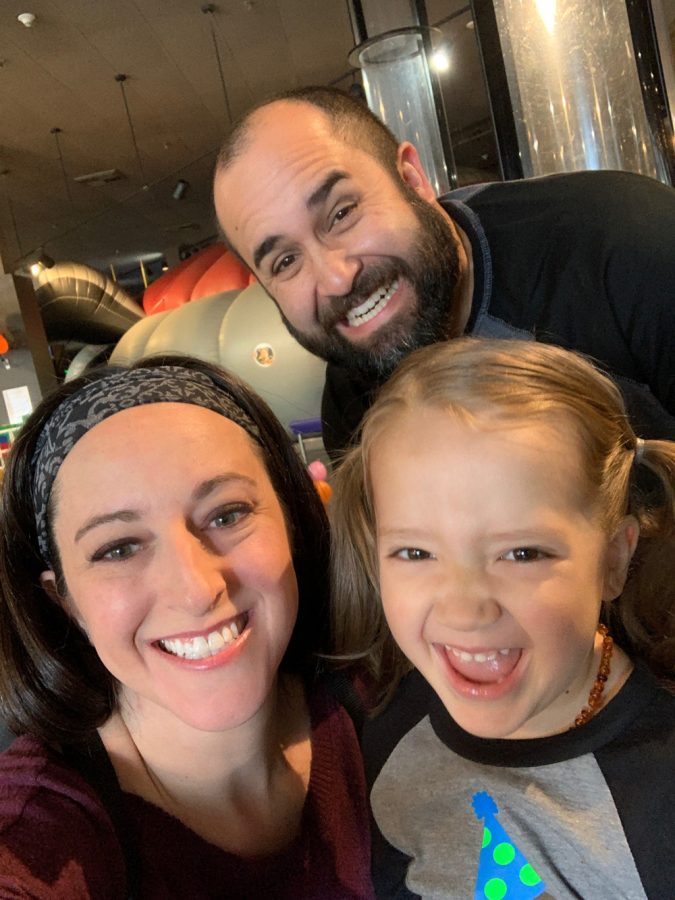Nurses care for children battling COVID-19
Published May 22, 2020
Holly Pollack and Nikki Grizzle work as pediatric nurses at St. Louis Children’s Hospital. Pollack is in the intensive care unit, and Grizzle is in the emergency room. Both say that while the number of pediatric COVID-19 patients at the hospital has been low, they are still seeing sick children who exhibit symptoms of the virus. The children are treated as COVID-positive pending their test results.
A few weeks ago, test results took 48 hours to come back, Pollack and Grizzle said. Now, they take two hours.
Grizzle, 40, who is Jewish, married and has a 4-year-old daughter, said: “Still, even in cases when the test has come back negative, depending on how sick the patient is and their symptoms, we may keep treating them as if they have it and test them again later.
ADVERTISEMENT
“That means strict isolation and tons of PPE (personal protective equipment). We’ve got gowns, goggles and, in the ER, these crazy face-shield helmets, like a welding helmet. It’s hard enough to place an IV or do a breathing treatment, but now we are in this garb, and having to do these things to a child, and they are scared. We have signs all around explaining that this is what the doctors and nurses will look like so don’t be scared, but they are.”
Pollack, 36, whose family splits their time between Kol Rinah and Bais Abraham, said she has taken care of one child with COVID-19 in the pediatric ICU, though there have been others. Her patient did recovered but he was “extremely sick,” she said, adding that “children definitely do better than adults after an ICU experience because children are more resilient.”
At first, Pollack said, she was nervous when she found out she would be taking care of COVID patients. She and her husband have four children ranging in age from 4 to 10, and of course, she wants to keep them, as well as herself, healthy and safe.
ADVERTISEMENT
“I was nervous maybe for the first hour or so,” she said. “But you quickly realize that this is still just a sick kid, and they need the same care as any other kid. You have more barriers between you and them, but it’s the same work that I have been doing for 12 years and that I love. You have to be more careful, but at the end of the day, it’s taking care of the sickest of sick kids in the hospital, and that is what I do.”
Both nurses try to take care of the children’s parents as well. While most area hospitals quarantine COVID patients and don’t allow visitors as a safety precaution, Children’s Hospital allows one parent to be in the room with his or her sick child, even if they have COVID.
“But they cannot leave the room at all,” Pollack said. “They order food from the cafeteria that is delivered to them. No one else can bring them food. There is a bathroom in the room, but no shower. I know they have come up with some plan for parents to take a shower, but it’s not every day.
“They can’t walk the hallways or go outside. If you can imagine, here your kid is sick with this terrifying virus that we don’t know much about, and you cannot leave the room. They are sleeping as if they have a newborn because we are in and out of the room all night long. Many of them have other children they cannot see. It’s incredibly challenging for a parent, the stress is so high. I cannot imagine that they don’t wind up with some level of PTSD from this experience even if their child does fine.”
As for their own stress, each of these nurses has her own way of coping. Pollack, who works every weekend so she can home-school her children during the week, sees a therapist (whom she was going to before the pandemic) and knits as well as listens to music.
“There’s also this app called Headspace,” she said. “It’s a meditation app that is free to health care providers through the end of the year. I’ve been meditating every day using this app. It’s not something in a thousand years I ever thought I would do, but it’s been helpful to me.”
Grizzle said, “There’s that quote that says, if you want to change the world, go home and love your family. The unimaginable things we see every day working in the ER — we have to find ways to deal with that on a daily basis. For me, it’s truly coming home and leaving work there, as hard as that is, and just enjoying my husband, my daughter, my dog, cat and the fish. Just loving them.”















